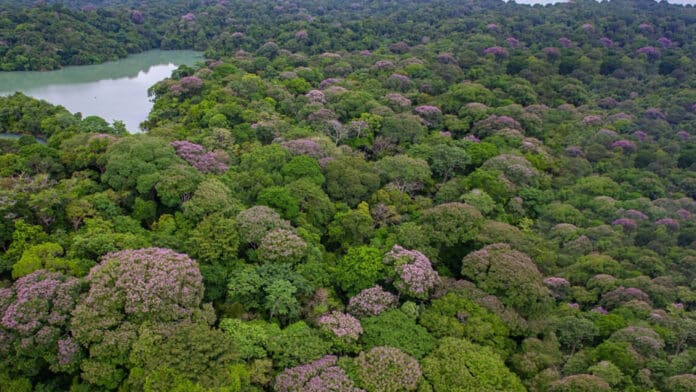Tropical woods are home to an extraordinarily diverse range of tree species. These patterns are the result of strong relationships between individuals. But scientists often need help understanding how such a diversity of species can coexist.
A new study by the University of Texas at Austin offers new insights. They revealed a vital characteristic of the spatial distribution of adult trees.
They found patterns consistent with this mechanism in a long-term forest plot in Panama. Using computational modeling and data collected over 30 years, the researchers discovered that adult trees in a Panamanian forest are three times as far apart as other adults of the same species.
For this study, scientists used data from a forest research plot the size of 100 football fields located on Barro Colorado Island in the Panama Canal, which has been researched for the past 100 years. The researchers determined that the distance between the trees is substantially more significant than the amount that seeds generally travel.
Annette Ostling, an associate professor with the University’s Oden Institute for Computational Engineering and Sciences, said, “This is a stepping stone to understanding the dynamics of things like carbon storage that matter in relation to climate change. It’s such a fundamental question that, even if the applications are not yet known, there’s still a lot to learn, and this is one ingredient in understanding.”
Why would there be so much repulsion (repelling) of the juvenile from its parent tree?
The computational model suggests that each tree species is much more negatively affected by its kind than by other species. This might be because species suffer from species-specific enemies: pathogens such as fungi or herbivores such as insects.
These enemies “make room” for other species to establish themselves around each tree, resulting in a more diverse forest and preventing one species from dominating.
Postdoctoral researcher Michael Kalyuzhny said, “Due to an abundance of available data on this particular forest, we knew the exact location of every tree and how far seeds travel. We were able to ask: How should the forest look if trees just established where the seeds fell? With our computational models, it turned out that the real forest does not look like this at all – the real trees are much more far apart.”
According to scientists, this study could help bridge the gap between contrasting theories on how forests are shaped. It also offers critical tools to learn how tropical forests, in particular, and their inhabitants change through time.
Journal Reference:
- Michael Kalyuzhny, Jeffrey K. Lake, Joseph Wright, and Annette M. Ostling. Pervasive within-species spatial repulsion among adult tropical trees. Science. DOI: 10.1126/science.adg7021
